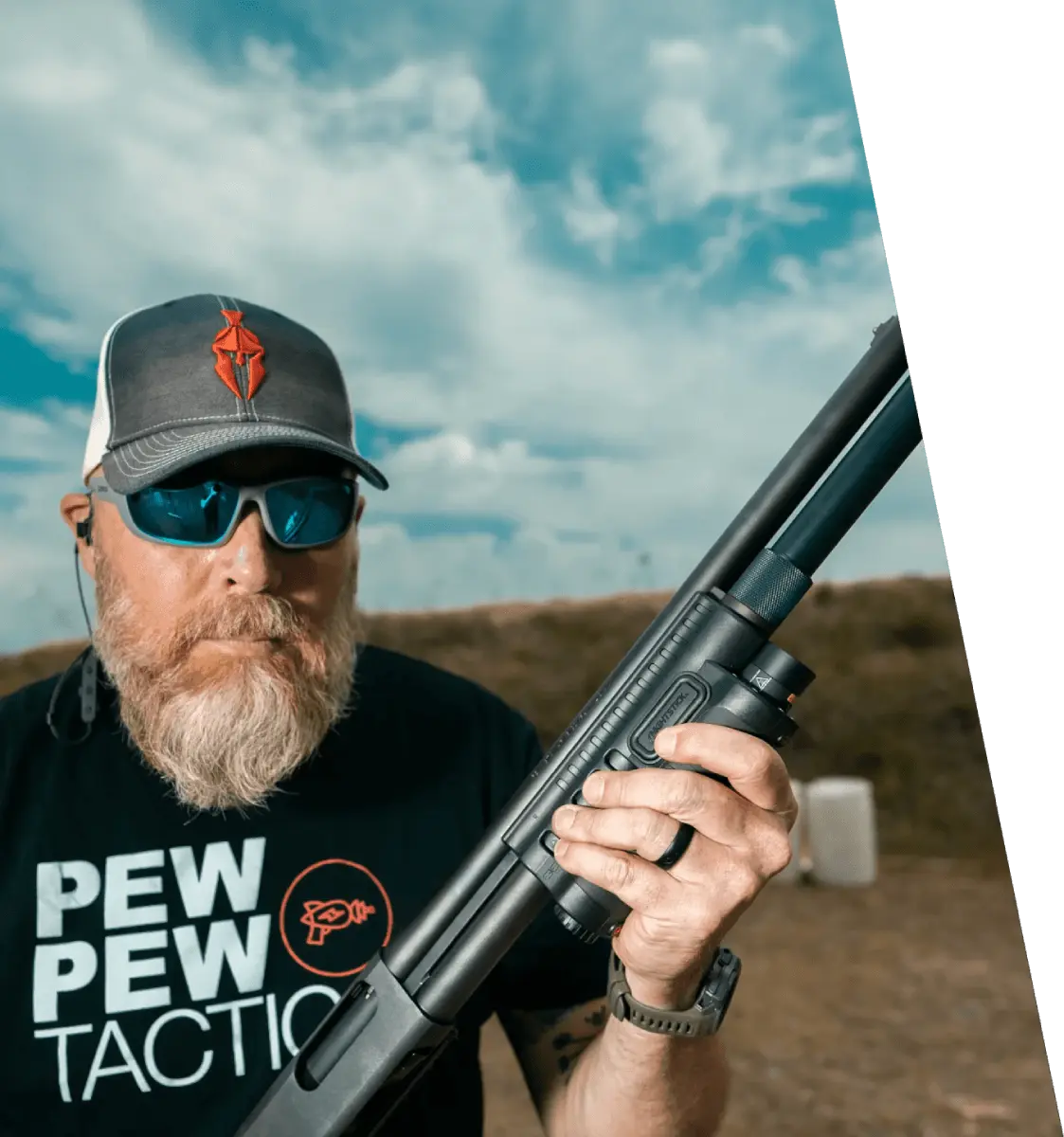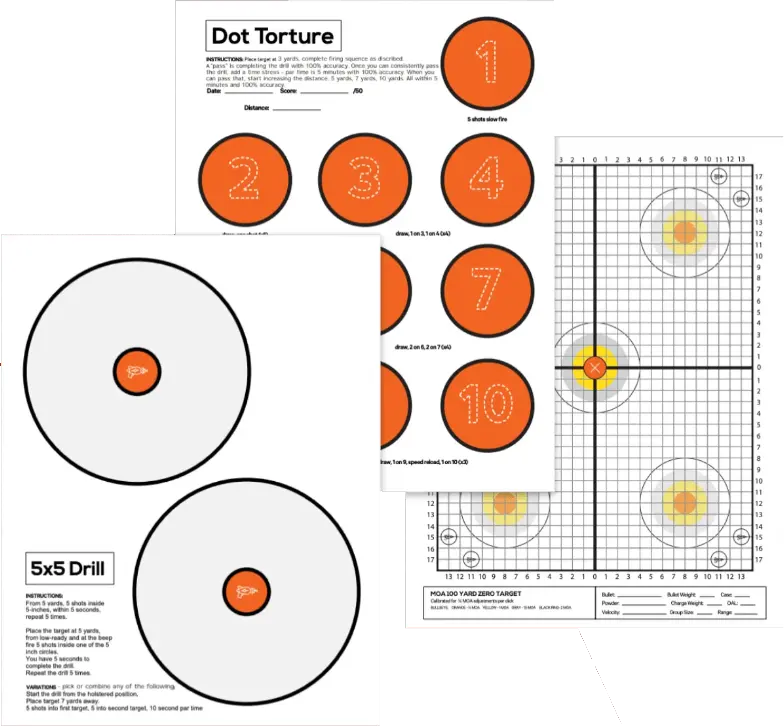Last Updated: July 25, 2025
Disclaimer: While the information provided here is legal in nature, it is not to be construed as legal advice and is for educational and entertainment purposes only.
Introduction
With the number of gun laws constantly being proposed and changed at the federal and state levels, it can get confusing trying to keep track of the ones that affect you and your gun rights.

Unfortunately, in a gun-hating state like Connecticut, you’ll have to jump through quite a few hoops before you’re allowed to buy and own a firearm, and there are certain guns and magazines you’ll just have to forego.
Luckily for you, we’ll go over everything you need to know to navigate the maze of Connecticut gun regulations!
Table of Contents
Loading...
Snapshot Summary
Looking for a snapshot summary of legal considerations? Here’s what you need to know.
- Permit to Own/Purchase a Firearm: Yes, Purchase Permit
- Permit to Own/Purchase Ammunition: Yes, Purchase Permit
- Firearm Registration Requirements: Yes, Assault Weapons Only
- Firearm Restrictions/Bans: Yes
- Magazine Restrictions/Bans: Yes
- Other Restrictions/Bans: Yes
- Safe Storage Laws: Yes
- Concealed Carry: Yes, Shall Issue
- Open Carry: No
- Castle Doctrine: Yes
- Stand Your Ground Laws: No
- Duty to Retreat: Yes
Before We Get Started
Connecticut loves gun licenses, issuing a total of five different licenses for guns and ammunition. These are the:
- Handgun Eligibility Certificate
- Long Gun Eligibility Certificate
- Ammunition Certificate
- Assault Weapon Certificate
- State Pistol Permit
This means that owning, using, and carrying guns in Connecticut requires lots of paperwork.
Gun Ownership Laws
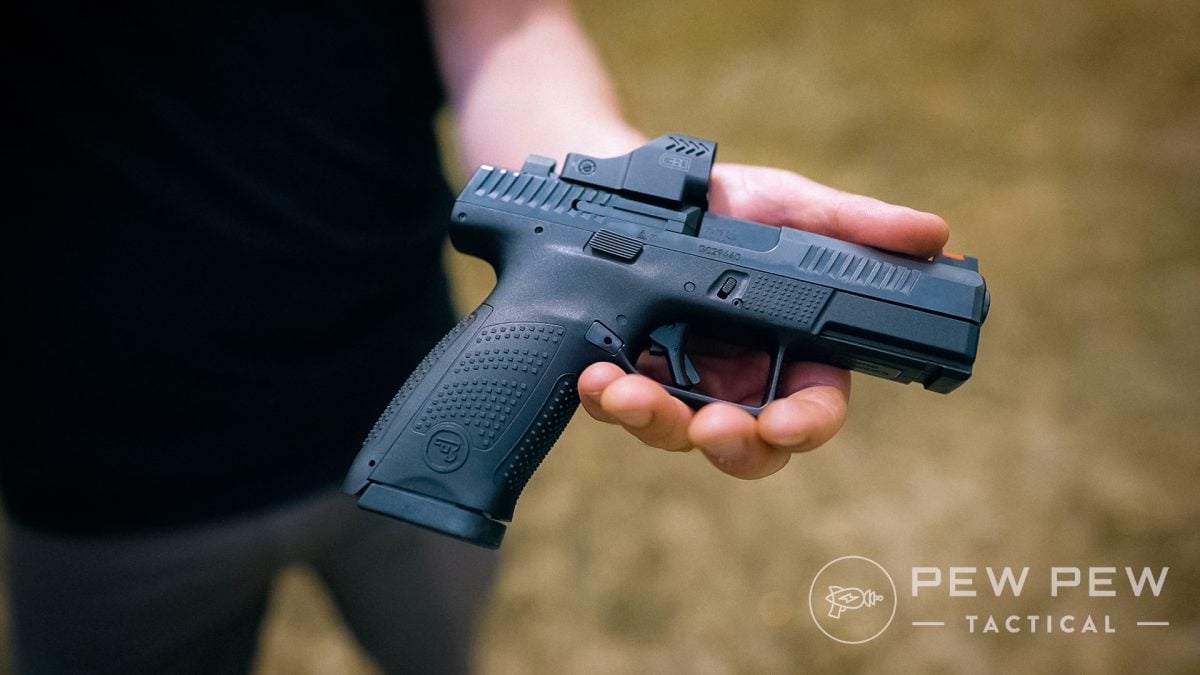
In Connecticut, you may not own or possess a gun or unfinished frame or receiver if you:
- Are a fugitive from justice
- Are illegally or unlawfully in the United States
- Are in the United States on a non-immigrant visa
- Were dishonorably discharged from the U.S. military
- Have renounced your U.S. citizenship
- Unlawfully use or are addicted to any controlled substance
- Have been adjudicated as a “mental defective” or have been committed to any mental institution
- Have been convicted:
- Of a felony
- Of a certain violent or intimidating misdemeanor that disqualifies you from holding a permit
- As a delinquent for the commission of a serious juvenile offense
- Have been found not guilty of a crime by reason of insanity (“mental disease or defect”) within the last 20 years
- Have been committed by court order to a mental institution for psychiatric disabilities within the last five years
- Have been voluntarily admitted or committed by an emergency doctor’s order to a psychiatric hospital within the last six months for treatment of a condition other than alcohol or drug dependency
- Have been subject to:
- A court-issued restraining or protective order due to the use, attempted use, or threatened use of physical force against someone else
- An issued gun seizure order due to posing a risk of imminent personal injury to yourself or someone else after receiving notice and a hearing
- Are an illegal alien or are unlawfully in the U.S. (i.e., overstayed your visa)
- Are prohibited from owning or possessing a firearm under federal law
Disqualifying misdemeanors include:
- Domestic violence involving the use or threat of use of physical force or a deadly weapon
- Illegal possession of narcotics or other controlled substances
- Criminally negligent homicide
- Third-degree assault
- Third-degree assault of a victim over 60
- Threatening
- First-degree reckless endangerment
- Second-degree unlawful restraint
- First- or second-degree rioting
- Inciting to riot
- Second-degree stalking
It is illegal for anyone under 21 to possess a handgun. Technically, there is no age limit for owning or possessing a long gun; however, there are restrictions on purchasing one.
Underage Gun Ownership
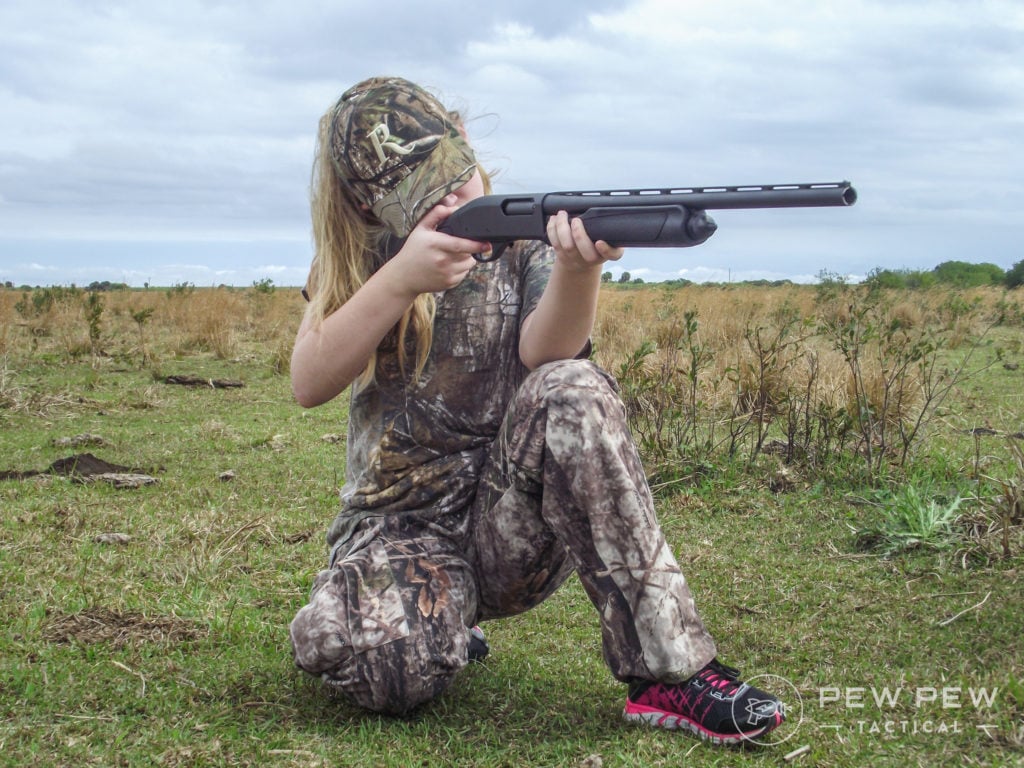
Connecticut does not place an explicit age limit on the possession of long guns. That said, those under 21 are banned from possessing a handgun unless they are target shooting under the immediate supervision of a CTPP or Handgun Eligibility Certificate holder.
State law prohibits the sale of long guns, ammunition, and magazines to minors. Handgun sales are restricted to those 21 and older.
Safe Storage & Child Access Prevention Laws
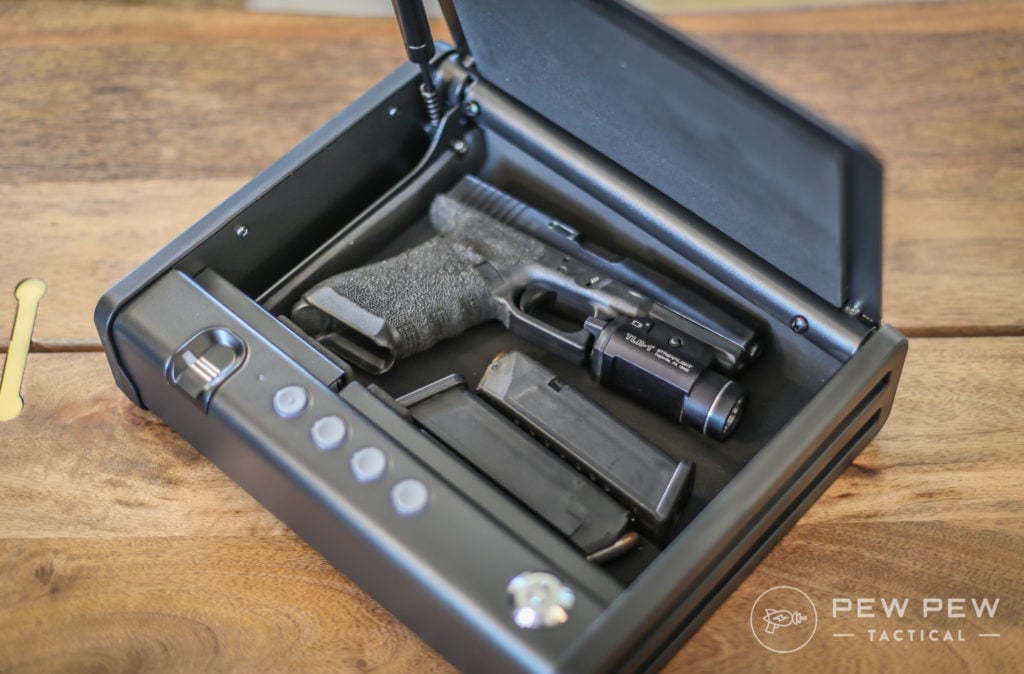
Connecticut requires you to store all firearms:
- On premises under your control in a securely locked box or other container in a location where a reasonable person would believe to be secure
- On your person or in such close proximity that you can retrieve it as if it were on your person
Gun dealers, private individuals, and other gun sellers are required to sell firearms with a locking device that is strong enough to not be easily disabled. The lock must include a key or an electronic or mechanical accessory that prevents unauthorized removal.
While Connecticut gun storage laws don’t change regarding children, there are stiffer penalties for improper gun storage if someone legally ineligible to possess a firearm uses it to cause injury or death to another person. Specifically, ineligible persons include:
- Minors (under 18)
- Household residents who are legally ineligible to possess a gun
- Household residents who pose a risk of imminent personal injury to themselves or others
Firearm Registration Requirements
Connecticut requires all “assault weapons” to be registered with the state police. When registering your gun, you must submit:
- Your name
- Your address
- Your date of birth
- Your thumbprint
- Any other information the state thinks is appropriate
It is also worth noting that Connecticut requires all deadly weapon offenders to register with the state, similar to a sex offender.
Restrictions and Bans
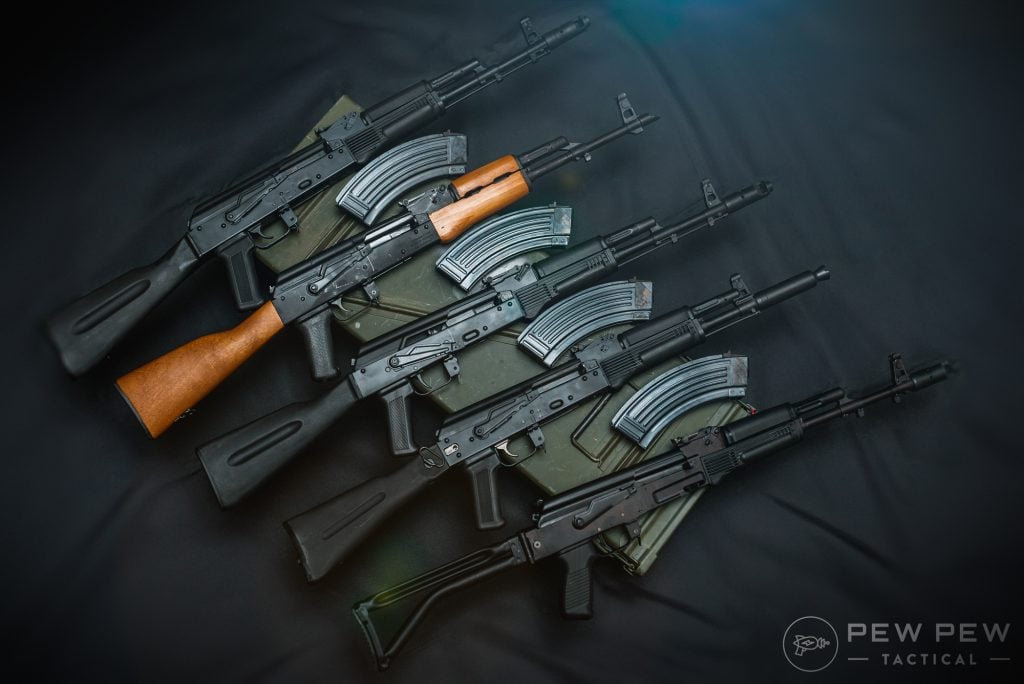
In 2023, Connecticut expanded the state’s 2013 assault weapons ban, which prevents ownership of certain guns, magazines, and accessories. Unfortunately, the Constitution State is one of America’s least gun-friendly states.
Restrictions on Specific Firearms/Firearm Types
The state also has a list of banned firearms that you can immediately cross off your shopping list. Connecticut’s official list of banned firearms (rifles, shotguns, and pistols) includes:
- AK-47
- AK-74
- AKM
- AKS-74U
- ARM
- Algimec Agmi
- American Spirit AR-15
- Armalite AR-180 and M15
- AR-10
- AR-15
- Australian Automatic Arms SAP Pistol
- Auto-Ordnance Thompson type
- Barrett Light-Fifty M82A1, REC7, and M107A1
- Beretta AR-70 and Storm
- Bushmaster Auto Rifle, Auto Pistol, Carbon 15, XM15, ACR, and MOE
- Calico models M-900, M-950, 100-P, Liberty 50, 50 Tactical, 100, 100 Tactical, I, I Tactical, II and II Tactical, Liberty III, and III Tactical pistols
- Centurion 39 AK
- Chartered Industries of Singapore SR-88
- Chiappa Firearms Mfour-22
- Colefire Magnum
- Colt AR-15, Sporter, and Match Target
- Daewoo K-1, K-2, Max-1, Max-2, AR 100, and AR 110C
- Doublestar AR rifles
- DPMS AR-15 and tactical rifles
- Draco AK-47
- DSA SA58 PKP FAL
- Encom MK-IV, MP-9 and MP-45
- Fabrique Nationale FN/FAL, FN/LAR, FN/FNC, 308 Match, and L1A1 Sporter
- FAMAS MAS 223
- Feather AT-9 and Mini-AT
- Federal XC-900 and XC-450
- Franchi SPAS-12 and LAW-12
- German Sport 522 PK
- Goncz High-Tech Carbine and High-Tech Long Pistol
- HCR AK-47
- Heckler & Koch HK-91, HK-93, HK-94, SP-89, PSG-1, and USC
- Hi-Point Carbine
- Holmes MP-83
- MAC-10, MAC-11 and MAC-11 Carbine type
- IMI Galil AR, ARM, and Galil Sporter
- Intratec TEC-9, Scorpion, and TEC-DC9, and AB-10
- IO Inc. Hellpup AK-47 and PPS-43C
- Iver Johnson Enforcer model 3000
- IZHMASH Saiga AK and Saiga 12
- Kel-Tec Sub-2000, SU rifles, RFB, and PLR-16 pistol
- MAADI AK47
- MAK90
- Masterpiece Arms MPA pistol
- Mini-Draco AK-47
- MISR
- NHM90 and NHM91
- Norinco 56, 56S, 84S and 86S
- Olympic Arms AR-15, A1, CAR, PCR, K3B, K30R, K16, K48, K8 and K9
- Poly Technologies AKS and AK47
- Remington Tactical Rifle Model 7615
- Rock River Arms LAR-15 and LAR-47
- Ruger Mini-14/5F (folding stock model only)
- SA 85 and SA 93
- SAR-8, SAR-4800 and SR9
- Scarab Skorpion
- SIG Sauer 57 AMT, 500 series, 551-A1, 556, 516, 716, M400, P516, and P556
- SLG 95
- SLR 95 or 96
- Smith and Wesson M&P15
- Spectre Auto Carbine and Auto Pistol
- Springfield Armory BM59, SAR-48 and G-3
- Sterling MK-6 and MK-7
- Steyr AUG
- Street Sweeper and Striker 12 revolving cylinder shotguns
- Thompson TA5 pistol
- TNW M230 and M2HB
- USAS-12
- UZI Carbine, Mini-Carbine, and Pistol
- Valmet M62S, M71S and M78S
- Vector Arms AK-47 and UZI
- VEPR
- Yugo Krebs Krink
- WASR-10
- Weaver Arms Nighthawk
- Wilkinson Arms Linda Carbine and Linda Pistol
- WUM
- Copies and duplicates of these firearms with the same capabilities
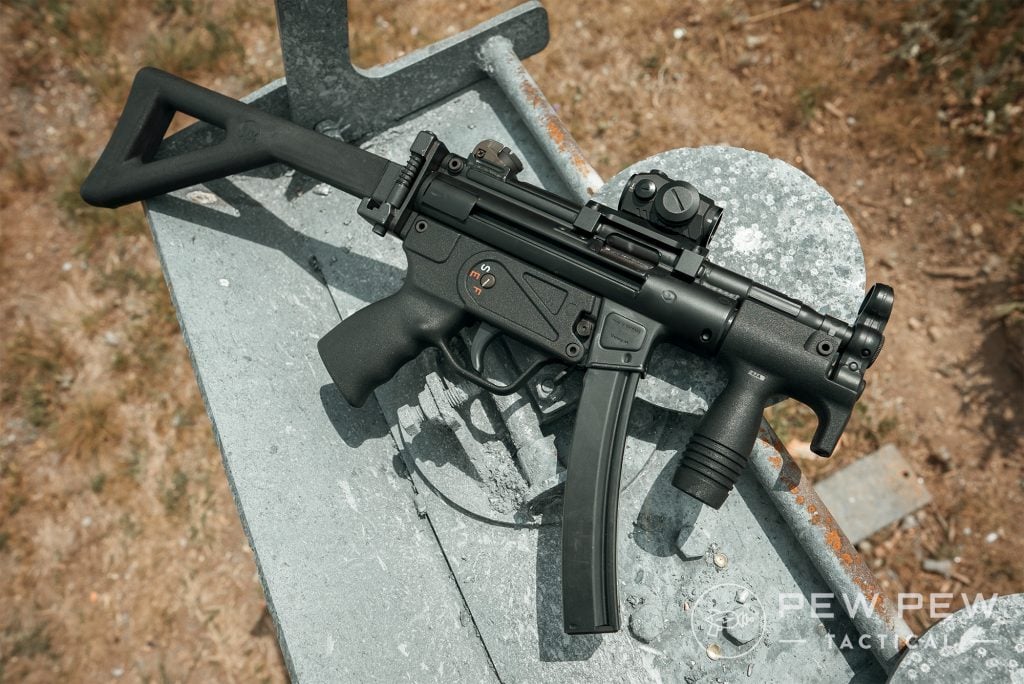
More generically, guns banned under Connecticut law include:
- Any sem-iautomatic, burst-capable, or fully automatic with selective fire capabilities
- Any semi-automatic rifle (including those listed above), regardless of the production date, that meets the following criteria:
- Can accept a detachable magazine and has at least one of the following:
- A folding or telescoping stock
- A pistol grip or any other grip or stock that allows the shooter to grip the firearm as if it had a pistol grip (such as a thumbhole stock)
- A foregrip
- A flash suppressor
- A grenade launcher or flare launcher
- Has a fixed magazine capability of accepting more than 10 rounds
- Has an overall length of less than 30 inches
- Can accept a detachable magazine and has at least one of the following:
- Any semi-automatic pistol (including those listed above), regardless of the production date, that meets the following criteria:
- Can accept a detachable magazine and has at least one of the following:
- The ability to accept a detachable ammunition magazine that attaches at some location outside of the pistol grip
- A threaded barrel capable of accepting a flash suppressor, forward pistol grip, or suppressor
- A shroud that is attached to, or partially or completely encircles, the barrel and permits the shooter to fire the pistol without being burned, except for a slide that encloses the barrel
- A second hand grip
- Has a fixed magazine capable of accepting more than 10 rounds
- Can accept a detachable magazine and has at least one of the following:
- Any semi-automatic shotgun that:
- Possesses two or more of the following components:
- A folding or telescoping stock
- A pistol grip or any other grip or stock that allows the shooter to grip the firearm as if it had a pistol grip (such as a thumbhole stock)
- Can accept a detachable magazine
- Has a revolving cylinder
- Possesses two or more of the following components:
- Any semi-automatic firearm that is not a rifle, pistol, or shotgun that possesses:
- A pistol grip or any other grip or stock that allows the shooter to grip the firearm as if it had a pistol grip (such as a thumbhole stock)
- The ability to accept a detachable ammunition magazine that attaches at some location outside of the pistol grip
- A fixed magazine capability of accepting more than 10 rounds
- A flash suppressor, silencer, or a threaded barrel capable of accepting a flash suppressor or silencer
- A shroud that is attached to, or partially or completely encircles, the barrel and permits the shooter to fire the pistol without being burned, except a slide that encloses the barrel
- A second hand grip
- An arm or stabilizing brace that allows the firearm to be fired from the shoulder (with or without a strap)
- A part or combination of parts designed or intended to convert a firearm into an assault weapon or any combination of parts from which an assault weapon may be rapidly assembled if those parts are in the possession or under the control of the same person.
Connecticut also prohibits the manufacture of “plastic” firearms that cannot be detected by metal detectors once the grip, stock, and magazine are removed. The state also bans the possession of firearms without a serial number unless the gun:
- Was lawfully possessed prior to 2024
- Has been declared to be in your possession
Legal Ownership of Assault Weapons
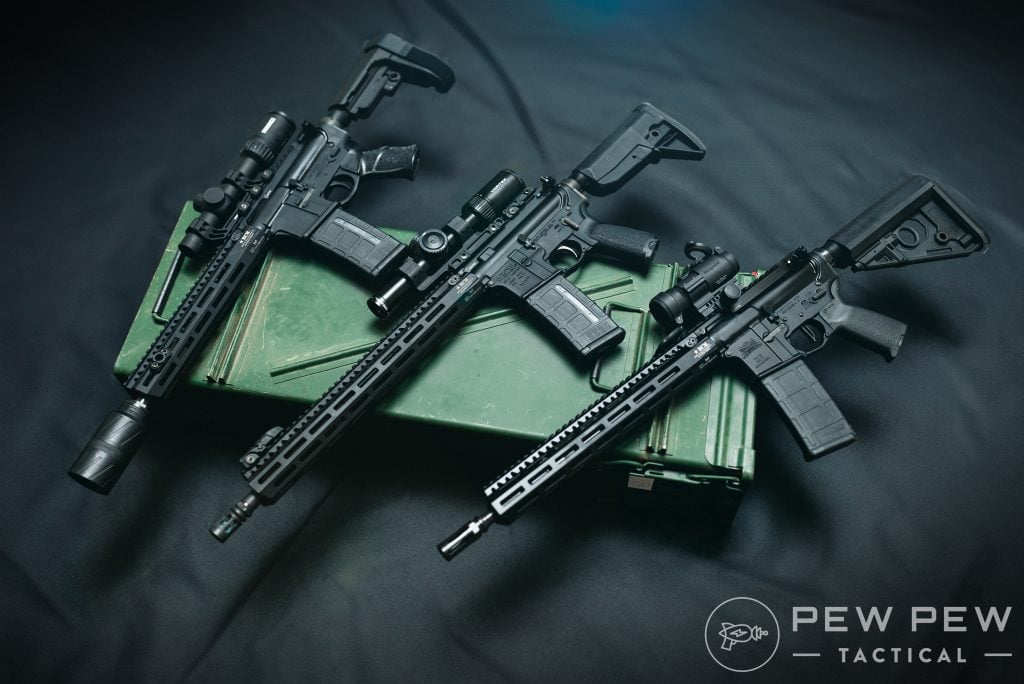
If you legally possessed an “assault weapon” before Connecticut’s ban went into effect, you can keep the gun if you obtained an Assault Weapon Certificate before the ban went into effect. Each firearm requires its own certificate (but only one).
To obtain an Assault Weapon Certificate, you must:
- Be 21 or older
- Be a Connecticut resident
- Meet all state and federal gun ownership eligibility requirements (see “Gun Ownership Laws”)
- Have owned the firearm(s) in question prior to the effective date of the relevant ban (October 1, 1994, or May 1, 2024), or have inherited the firearm(s) in question
With a valid certificate in hand and having registered your firearm, you can only keep it in a select few places, including:
- Your residence, property, or business
- Someone else’s property with the property owner’s express permission
- Certain shooting ranges and clubs
- A firearms exhibit, display, or educational project
You can legally transport a registered assault weapon to and from places where you can legally store it. When transporting the firearm, it must be unloaded and kept:
- In the trunk
- In a case or container that keeps it inaccessible to anyone in the vehicle
If you possess a registered assault weapon that you then lose or have stolen from you, you have 72 hours to report the loss or theft to local or state police.
In most cases, Connecticut does not allow an assault weapon to be handed down as part of an inheritance, so keeping one in your possession and in working order is an unlikely scenario. That said, if you do inherit (or otherwise legally obtain possession of) an assault weapon that has a valid certificate associated with it, you have 90 days to:
- Apply for a new Assault Weapon Certificate in your name
- Sell it to a licensed gun dealer
- Permanently disable it
- Take it out of state
- Surrender it to your local police department or the state police
If you move to Connecticut from another state where your AR-15 (or other “assault weapon”) is legal, you will have to leave it behind or kiss it goodbye within 90 days. The state will not let you apply for a certificate or register your firearm.
The application process for an Assault Weapon Certificate closely matches the process for other Connecticut eligibility certificates, with the biggest differences being the application form and the need to provide proof that you legally inherited the firearm in question. You can also apply online by following these instructions.
Magazine & Accessory Restrictions
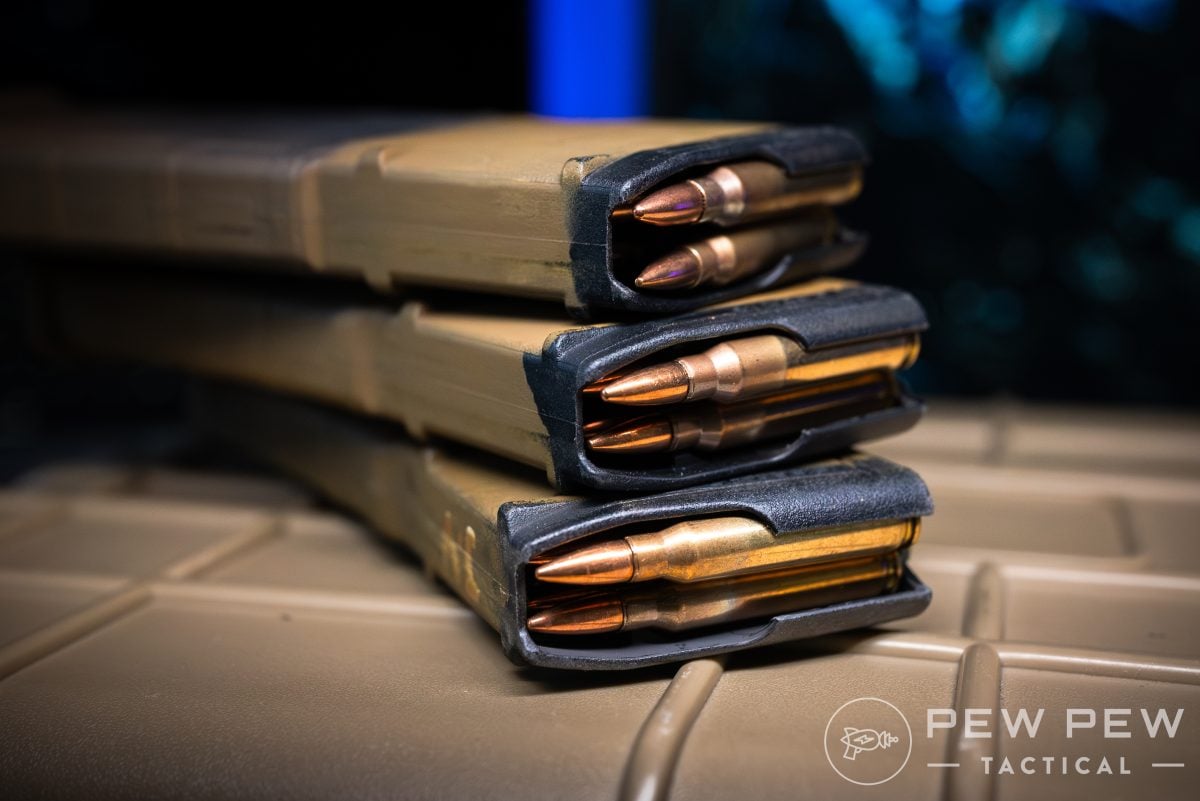
Connecticut bans the purchase, possession, or ownership of any magazine or other ammunition feeding device (AFD) with a capacity of over 10 rounds, regardless of the manufacturer’s original design. Magazines and AFDs that can be readily restored or converted to accept 10-plus rounds are also banned.
Lever-action tubular magazines and tubular magazines for .22 caliber ammo are exempt from the round count restriction. Magazines permanently altered to limit the round count to 10 or less are also legal.
You may only acquire a banned magazine if it is part of an inheritance.
“Rate of fire enhancements,” including bump stocks, trigger cranks, binary triggers, and forced reset triggers, are illegal in Connecticut.
Grandfathered Magazines
You may possess a high-capacity magazine (11+ rounds) in Connecticut if you:
- Owned it prior to January 1, 2014
- Had not declared it prior to July 1, 2023
- Officially declared it prior to January 1, 2024
Lost and Stolen Guns
State law requires you to report any lost or stolen gun to local police within 72 hours of discovering the loss or theft. The report should be made to the police department in the town where the loss or theft occurred.
If the town lacks a police department, the report should be made to the Connecticut State Police.
Purchasing a Gun
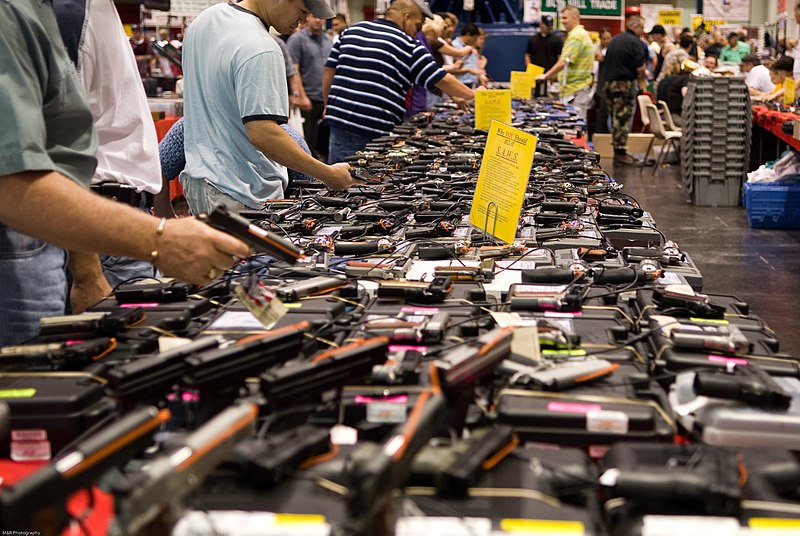
Purchasing a gun in Connecticut is not a straightforward endeavor. This state loves paperwork, as evidenced by its use of eligibility certificates.
Certificates
Owning a gun in Connecticut can be a little bit of a paperwork headache, so it pays to know what the state expects of its gun-owning residents. To purchase a firearm, Connecticut requires gun buyers to possess a state-issued:
- Long Gun Eligibility Certificate
- Handgun Eligibility Certificate
- Connecticut Pistol Permit (concealed carry permit)
Getting Your Certificate
To apply for either an eligibility certificate or a pistol permit, you must:
- Meet the relevant age requirements:
- 18 or older for a handgun
- 21 or older for a long gun
- Submit a completed, notarized application
- Possess a valid state-issued ID
- Submit to a criminal background check and meet all state and federal gun ownership requirements (see “Gun Ownership Laws”)
- Successfully complete an approved firearms safety course with live fire component
- Provide a passport-style photograph taken within the last six months
- Submit to being fingerprinted
- Pay a $35 application fee (cash and credit cards not accepted)
The Handgun Eligibility Certificate application also requires you, since October 2023, to not:
- Be a fugitive from justice
- Have been convicted of a family violence misdemeanor
- Have been convicted in any court of a domestic violence misdemeanor
Certificate Training
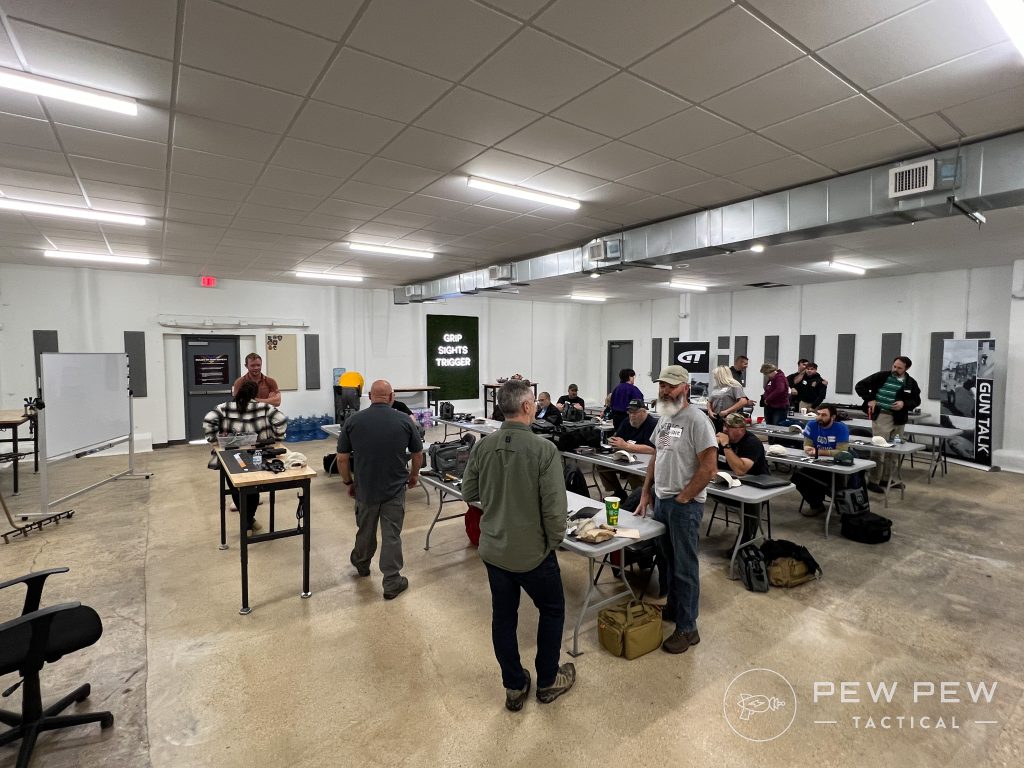
An approved training course for a handgun certificate must include:
- The NRA’s Basic Pistol Course (minimum)
- A live-fire component using a semi-automatic pistol or revolver
- A signed certificate indicating that you successfully completed the course
For a long gun certificate, you will need to complete a Department of Energy & Environmental Protection (DEEP) Firearms Safety Course or equivalent and obtain a signed certificate saying that you completed the course.
It can take up to 90 days for your certificate application to be reviewed and a decision to be made. If your application is denied, you will receive a written explanation detailing why you were denied. You can appeal the denial to the Board of Firearm Permit Examiners.
Once you receive your certificate, it is valid for five years.
Certificate Renewal
You should receive a notification by mail or email 90 days prior to your certificate’s expiration. To renew the certificate, you will need to complete the same process as when you first applied, but this time, you can skip the training course (if you still have the certificate from your original class). Everything else, including the fee and wait time, will be the same.
If you are late getting on the ball, there is a 90-day grace period during which you can submit your renewal application. After that, you will need to restart the application process, including taking a new gun safety course.
Any Certificate Exceptions or Loopholes?
There are no exceptions or legal loopholes for eligibility certificates. To purchase a gun in Connecticut, you must possess an appropriate certificate.
Record of Transfers
Connecticut requires all firearm transfers to be recorded.
Purchasing from a Dealer
In Connecticut, dealer purchases are probably the way to go, since private gun sales require the same steps as a dealer purchase (plus one or two more) but without the professional assistance you’d get at a gun store.
Buying a Handgun
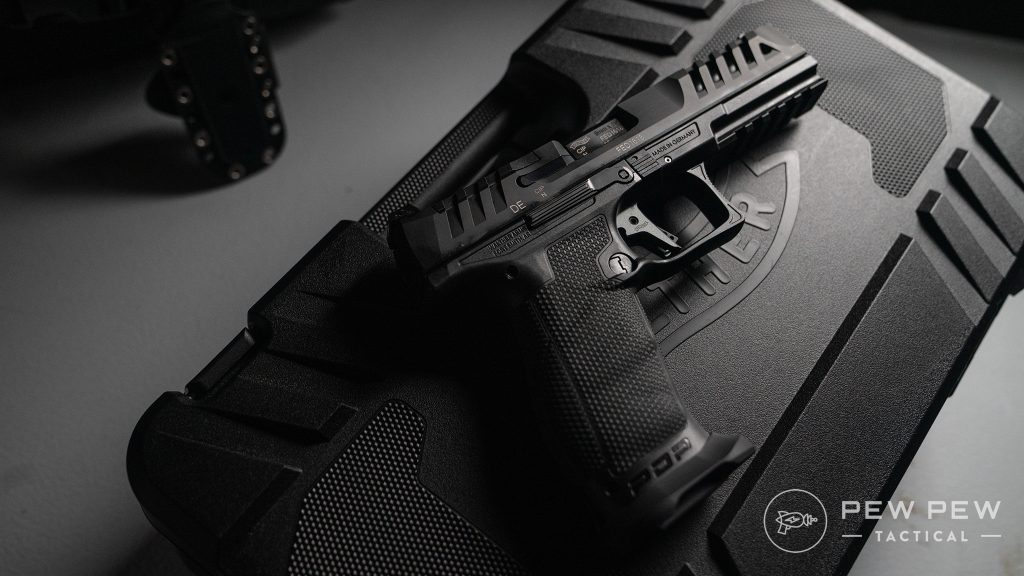
To buy a handgun, you must:
- Be 21 or older
- Present a Handgun Eligibility Certificate, Long Gun Eligibility Certificate, or CTPP
- Have a background check performed by a licensed firearms dealer
- Register your new gun
State law limits you to three handgun purchases every 30 days (or six guns if you’re a shooting instructor).
Buying a Long Gun

To buy a long gun, you must:
- Be 18 or older
- Present a Long Gun Eligibility Certificate or CTPP
- Have a background check performed by a licensed firearms dealer
- Register your new gun
Private Sales
Unfortunately, a private gun sale does nothing to make the purchasing process easier than at a gun store. You are still required to possess the appropriate eligibility certificate (or CTPP) and undergo a background check (a service offered by Connecticut FFLs for a fee).
Additionally, the SLFU must authorize and record the transfer, even if you are buying a gun from a close friend.
Antiques and Heirlooms
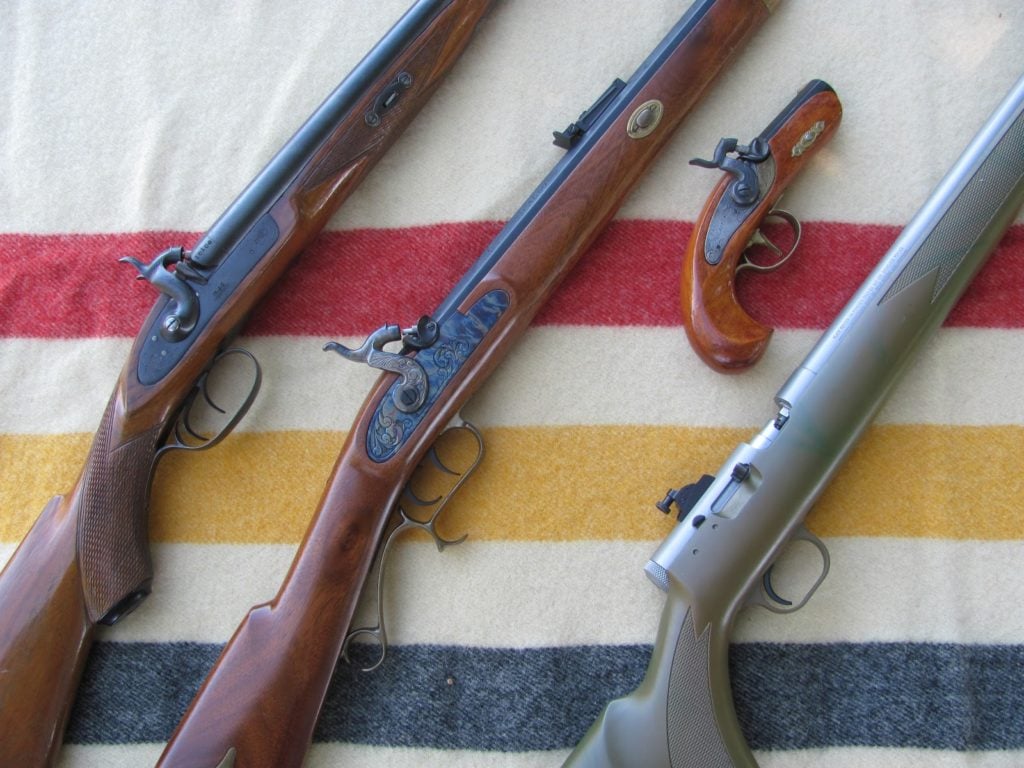
Connecticut does not require you to possess a valid Long Gun Eligibility Certificate to purchase an antique firearm.
State and federal law define an antique firearm as any matchlock, flintlock, percussion cap, or similar firearm manufactured before 1899 or a replica of such firearm that:
- Is not designed or redesigned for using rimfire or conventional centerfire fixed ammunition
- Uses rimfire or conventional centerfire fixed ammunition that either is no longer manufactured in the U.S. or is not readily available on the U.S. market
This definition also covers antique black powder muzzleloaders, unless the gun:
- Incorporates a firearm frame or receiver
- Has been converted into a muzzleloader
- Can be readily converted to fire fixed ammunition by replacing the barrel, bolt, and/or breechblock
Purchasing Ammo
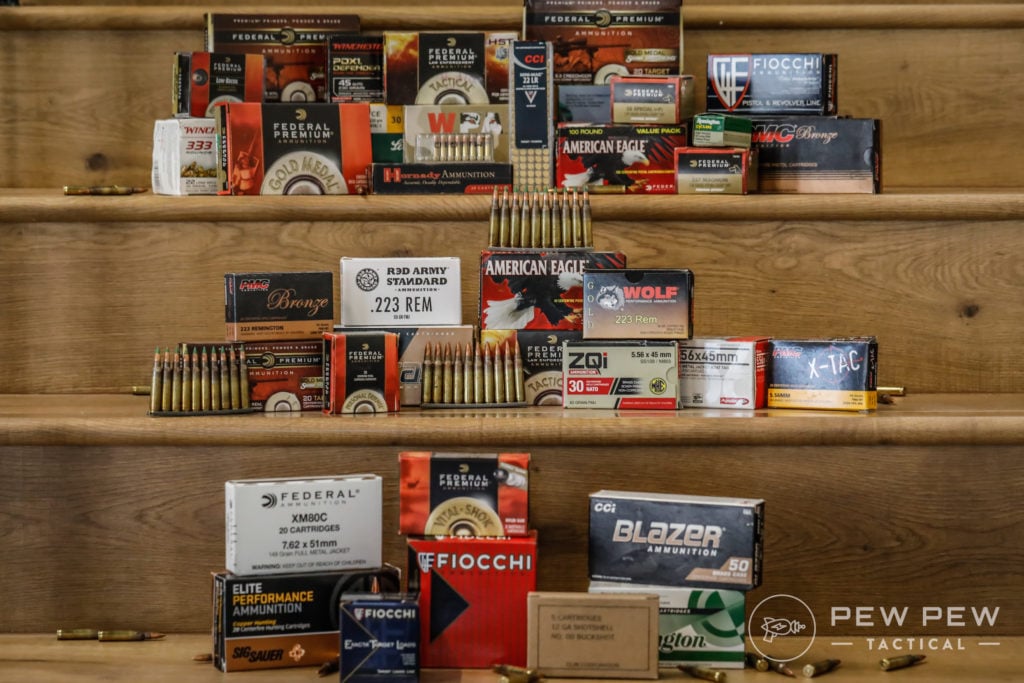
Connecticut bans armor-piercing, incendiary, and .50 caliber ammunition.
To purchase ammunition in Connecticut, you must be 18 or older and must possess a valid:
- CTPP
- Handgun Eligibility Certificate
- Long Gun Eligibility Certificate
- Ammunition Certificate (plus valid photo ID)
An Ammunition Certificate can be obtained by completing the application process, which is very similar to applying for a Handgun or Long Gun Eligibility Certificate (minus the gun safety course requirement). You must complete the application and send it in by mail.
Plan to wait for 90 days before hearing the state’s final decision. If your application is denied, you can appeal to the
Ammunition Certificates are valid for five years.
Concealed Carry & Open Carry
Want to carry a handgun in Connecticut? You will need a Connecticut State Pistol Permit (CTPP), but you’ll be limited almost entirely to concealed carry.
Open Carry
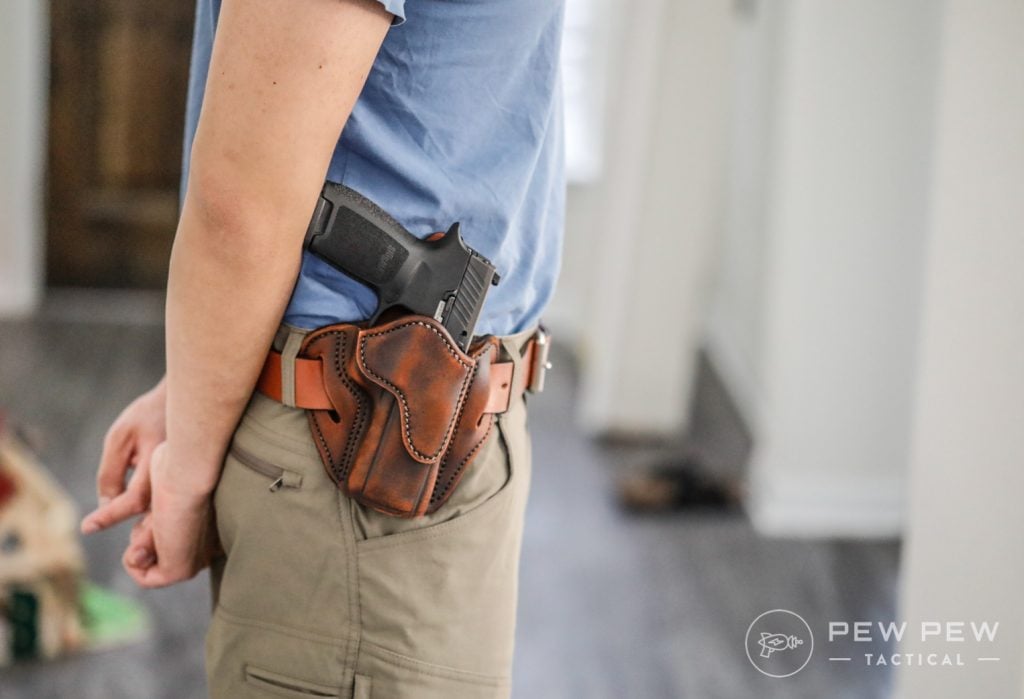
Connecticut only allows open carry:
- In your home
- On your land
- At your place of business, if you are the business owner
- While actively hunting
- At the shooting range
Concealed Carry: Getting Your Connecticut State Pistol Permit
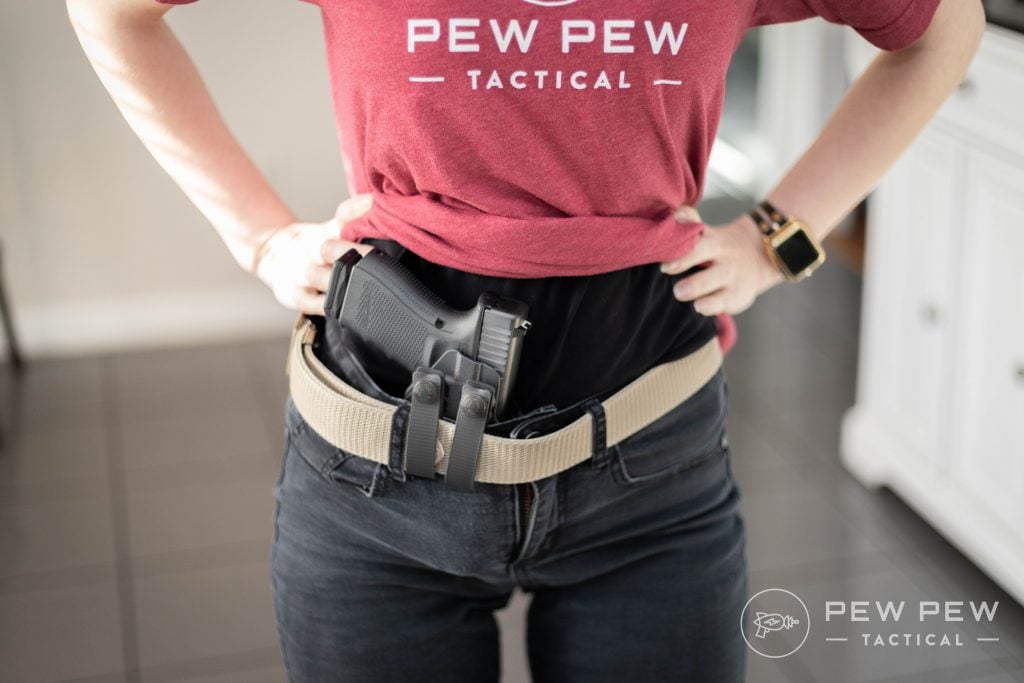
Obtaining your Connecticut State Pistol Permit (CTPP) is a significant undertaking in terms of time and money. Contrary to most of America, the Connecticut State Police issues CTPPs instead of delegating that responsibility to county sheriffs.
To apply for a Connecticut CTPP, you must:
- Meet all state and federal gun ownership eligibility requirements (see “Gun Ownership Laws”)
- Be at least 21
- Be a legal U.S. resident
- Proof of legal residence, such as:
- A birth certificate
- A U.S. passport
- Proof of citizenship (for naturalized citizens)
- An Alien Registration Number with 90-day proof of residency
- Complete a handgun safety course with live fire training using a handgun (must at least meet the standards of the NRA’s Basic Pistol Course)
- Submit to a criminal background check
- Submit fingerprints
- Submit photographs
- Pay two application fees
While the DECTPP issues all statewide CTPPs, your local law enforcement won’t be completely left out in the cold.
Before submitting your CTPP application to the state police, you must first obtain a temporary local pistol permit from a local issuing authority. Thankfully, the legal requirements for a local permit are the same as those for a CTPP.
CTPP Training Requirements
In Connecticut, an approved CTPP training course must include:
- The NRA’s Basic Pistol Course (minimum)
- A live-fire component using a semi-automatic pistol or revolver
- A certificate indicating that you successfully completed the course
The Waiting Game: Round 1 (Local Pistol Permit)
Once you’ve got everything squared away, you will need to submit your first application (local, temporary pistol permit) to your local issuing authority (police department, city or town hall, or first selectman’s office). You’ll submit your application, pay the fee, and get fingerprinted.
The fee for your local permit should be $70, but it’s not uncommon for issuing authorities to charge extra fees. Don’t be surprised if you end up spending over $100.
State law requires issuing authorities to either approve or deny your application within eight weeks.
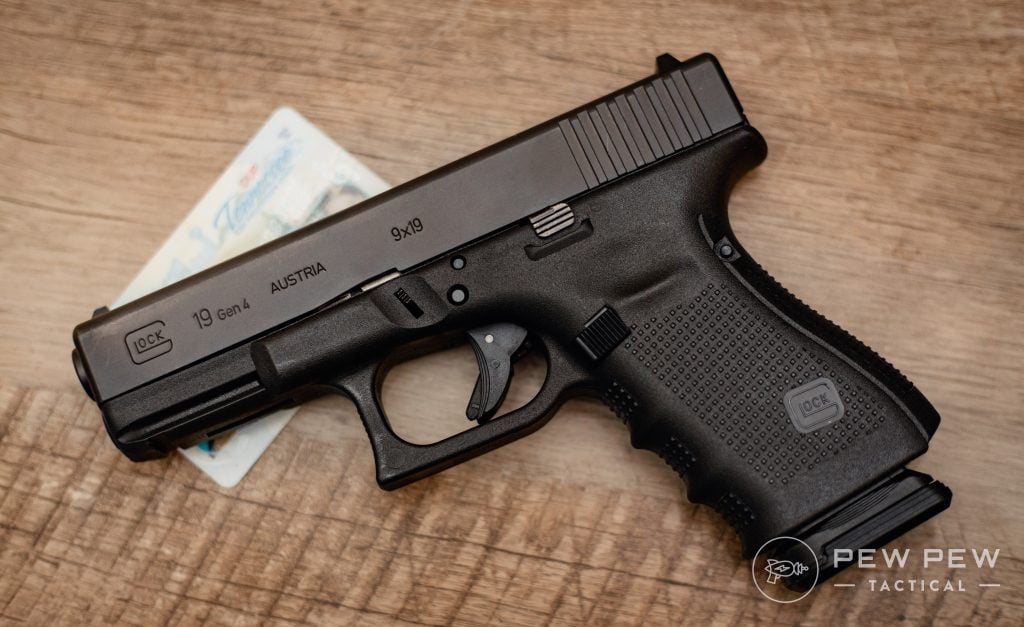
The local issuing authority can deny the permit if they determine that you are not “suitable” to possess or carry a handgun. Along the same lines, even if you have already been issued a permit, your issuing authority can suspend or revoke your pistol permit if they do not believe you still meet all permit requirements. State law does not define “suitable,” so this comes down to the discretion of your local issuing authority.
If your application is denied, you can appeal the decision to the state’s Board of Firearms Permit Examiners. Just like everything else, the appeal process involves plenty of paperwork. You can make your appeal either:
- 90 days after being notified of the denial (or permit revocation); or
- If your issuing authority failed to respond or make a decision within eight weeks and you have already made every effort to contact the authority.
Once your application is approved, your local pistol permit is valid for 60 days and does not allow you to carry a handgun. Now, you can apply for your CTPP.
The Waiting Game: Round 2 (CTPP)
Once you receive your local pistol permit, you will need to submit your second application to the state police’s Special Licensing and Firearms Unit (SLFU) for your CTPP. (Yes, you will be using the same application for both rounds of this process.)
The same eligibility requirements apply, and this application also comes with its own $70 fee, so budget accordingly.
Connecticut law requires the SLFU to either approve or deny your CTPP application within eight weeks. Just like at the local level, the SLFU can deny your application if they determine you are “unsuitable” to own or possess a handgun.
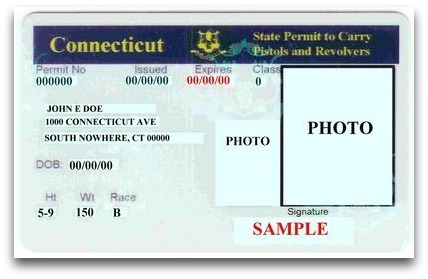
If your application is denied, you can appeal the decision to the Board of Firearms Permit Examiners.
Since Connecticut is a shall-issue state, your sheriff must issue you a CTPP if you meet all the requirements. Once issued, your CTPP is good for five years.
Renewing Your CTPP
In Connecticut, the state police will mail a permit renewal notice to your last known address 90 days prior to your CTPP expiring.
You may submit your renewal application packet online or by mail within 90 days before or after your permit’s expiration date. Once you pass the 90-day grace period, you will have to apply for a brand-new CTPP.
To renew your CTPP, you will need:
- A completed renewal application
- Color passport style photo (2”x2”) taken within the last six months
- A copy of your proof of citizenship or legal residence (birth certificate, passport, green card, etc.)
- A $70 renewal fee
Currently, you can apply for renewal either by mail or online. (Here are instructions for renewing online.) Non-residents must renew by mail.
Prohibited Places
Even though the CTPP is good throughout the entire state, there are still places where you cannot carry a firearm. In Connecticut, concealed carry is illegal:
- On public or private K-12 school property and at school-sponsored activities, except:
- For use in programs approved by school officials
- In accordance with an agreement between you/your employer and school officials
- While crossing school property to gain access to public or private property for hunting or other lawful purposes if your firearm is unloaded and you have permission from the local or regional board of education
- In any building used by the state legislature or which houses offices or meeting areas for members, officers, employees, or committees of the legislature
- While hunting
- At state parks, state forests, national parks, national forests, and wildlife management areas (with exceptions for sections of the Appalachian National Scenic Trail and the Weir Farm National Historic Park)
- At Bluff Point Coastal Reserve
- On any private property:
- With posted signs
- Where the owner or lawful steward prohibits it
- On all property owned by the town of Woodbridge
- At any other place that bans the carry of firearms under federal or state laws or regulations
If you do happen to visit a prohibited place, consider leaving your handgun in the car in accordance with state storage laws.
Any CTPP Exceptions or Loopholes?
You do not need a CTPP to carry concealed if you are a retired law enforcement officer who qualifies under the Law Enforcement Officers Safety Act (LEOSA) of 2004. However, to apply for a LEOSA card for the first time, you must hold a valid CTPP.
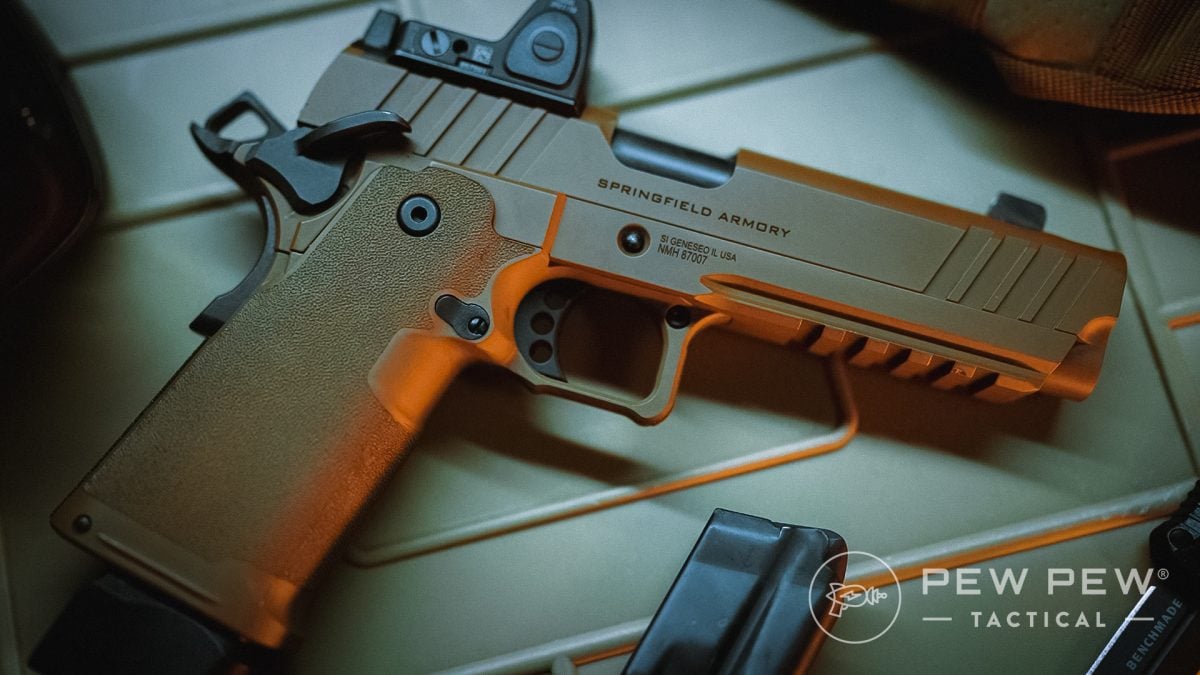
To apply for a LEOSA card, you will need to set up a qualification appointment. Before your appointment, you must submit:
- A completed application
- A valid CTPP
- A Release and Indemnification form
- Letter(s) of Good Standing from every department where you were employed
If you used to hold a LEOSA permit, left the state, and are returning, you will only need to submit a completed application and Release and Indemnification form. These must be submitted by email, fax, or snail mail.
For further LEOSA qualification information, visit the SLFU LEOSA webpage.
Changes of Residence
If you move, state law gives you just two business days to report your change of address to your pistol permit issuing authority (local or CTPP). You will need to include your:
- Name
- Permit number
- Old address
- New address
To notify the state police, you may either submit your notice via the online portal or mail.
If you move out of state, you are allowed to keep your CTPP if you:
- Notify the state police in time
- Continue renewing your permit
Replacing a Lost or Stolen Permit
Connecticut does not like lost permits. If you lose your CTPP or have it stolen, you must:
- Notify police in the area where you lost or had your permit stolen
- File a police report
- Notify your CTPP issuing authority of the theft or loss
To replace your permit, you will need to submit a completed DPS-900-C-1 form and a $5 check or money order by mail to the state police.
Reciprocity
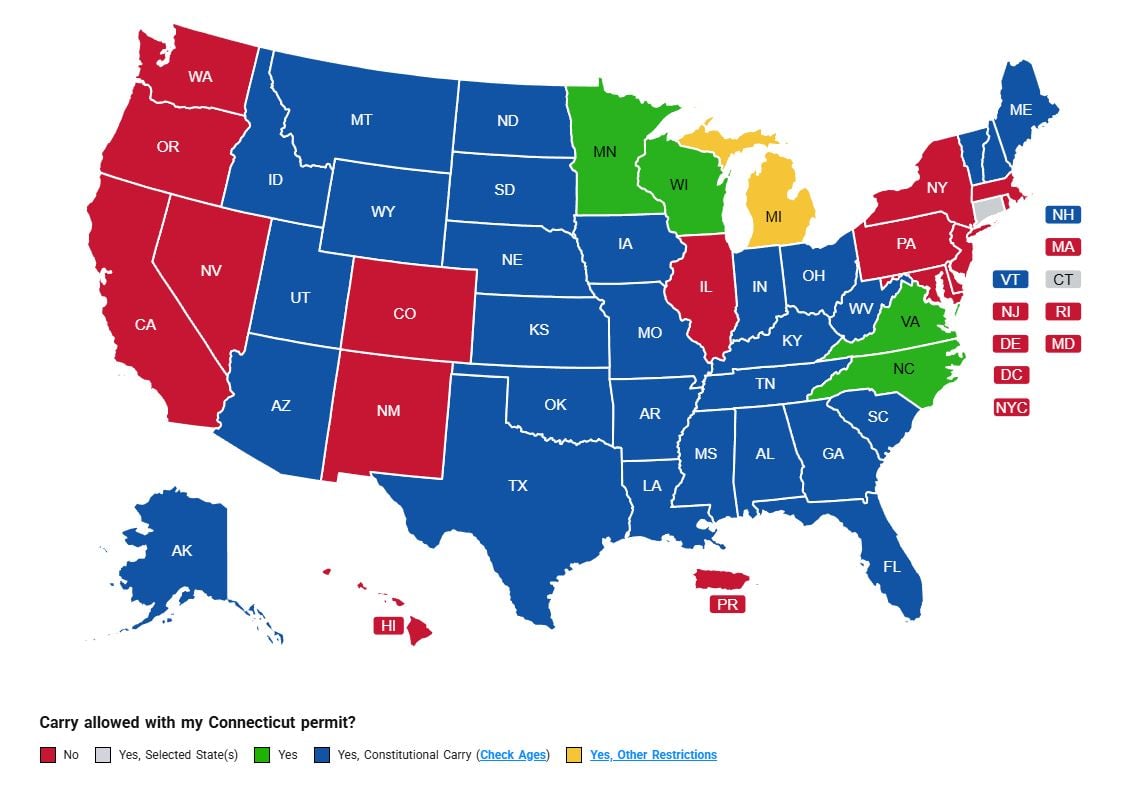
Most states allow Connecticut CTPP holders to carry concealed, although this is due to having constitutional (permitless) carry laws on the books rather than official reciprocity.
The age of eligibility varies by state, and the laws for permitless carry may differ from regular concealed carry laws, even within the same state.
While most states recognize Connecticut’s CTPP, some still do not. A CTPP is not recognized in:
- California
- Colorado
- Delaware
- Hawaii
- Illinois
- Maryland
- Massachusetts
- Nevada
- New Jersey
- New Mexico
- New York
- Oregon
- Pennsylvania
- Rhode Island
- Washington
- Washington D.C.
Minnesota, North Carolina, Virginia, and Wisconsin officially recognize CTPPs. Michigan also does, but the state has additional restrictions that you will need to know before carrying there.
For those of you who already have CCW permits from other states, you will have to leave your carry rig at home. Connecticut does not recognize concealed carry permits from any other state.
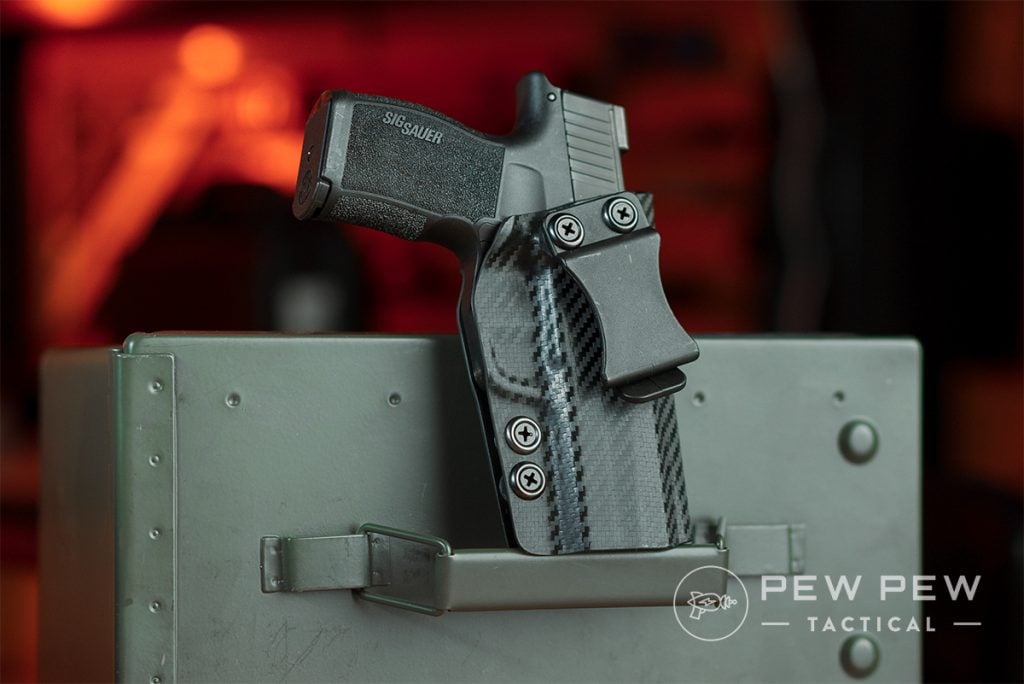
That said, non-residents are eligible to apply for a non-resident CTPP if they already hold a permit or license from their home state.
To apply for a non-resident CTPP, you will need to follow the same process as a resident, but you can skip the local pistol permit requirement. Instead, you will apply directly to the SLFU.
Note: You’ll want to take a look at our state gun law guides for whichever state you’re planning on visiting, just to familiarize yourself with the gun laws on carrying while out there and be aware of the differences you might need to be careful of.
Always check the law in the state you’re traveling to before you carry there.
Transporting Your Guns
Connecticut bans the presence of any firearm in your vehicle for which there is no permit. In short, if you don’t have the right paperwork for the gun you wish to transport, you have to leave it at home.
The only exception is for BB guns, which must still be unloaded and locked inside a container as you would an actual firearm.
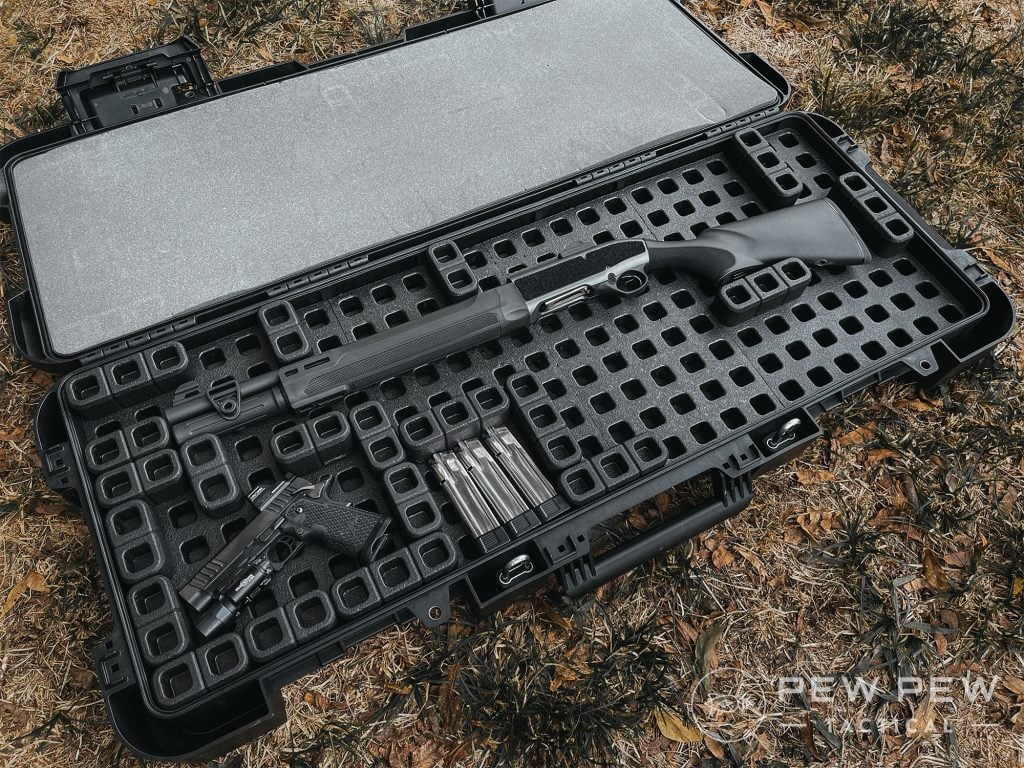
All firearms must be transported unloaded and stored in your trunk or a locked container. (Lockable glove compartments and center consoles don’t count as locked containers.)
Your guns cannot be readily accessible or directly accessible from the passenger compartment (which excludes truck beds or the hatch area of a hatchback).
Failure to properly secure a gun inside a vehicle is a felony in Connecticut.
Transporting Long Guns
All long guns in your vehicle must be transported with an empty chamber. Muzzleloaders cannot be primed, and flintlocks must not have any powder in the pan. This law also applies to snowmobiles.
Transporting Handguns
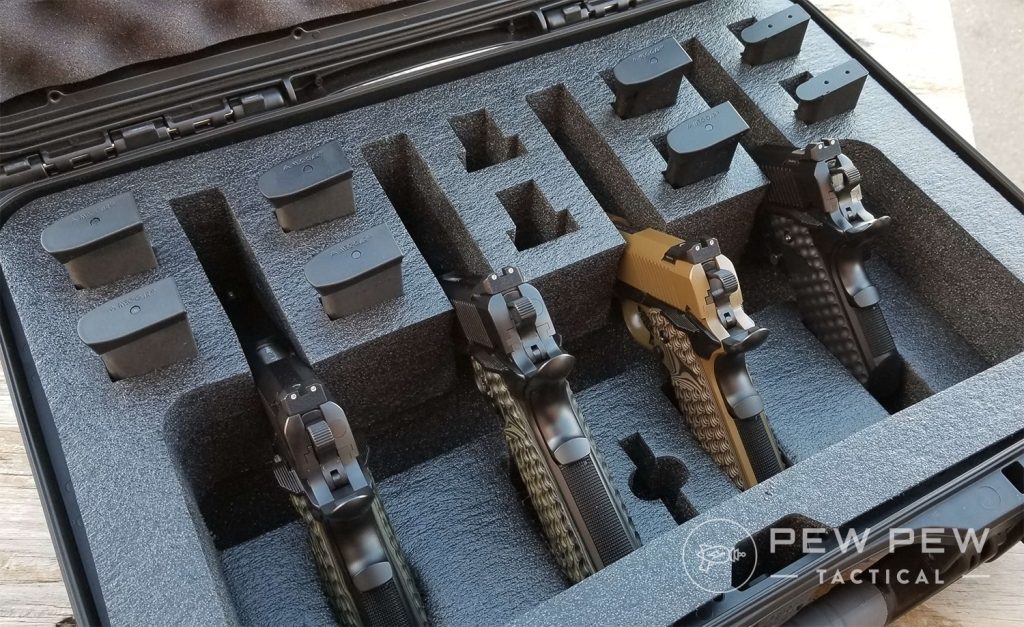
Loaded handguns may be transported in any vehicle or snowmobile only with a CTPP.
If you leave your vehicle unattended with a handgun inside, the firearm must be secured in:
- The trunk
- A securely locked safe
- A securely locked glove compartment
Connecticut defines an unattended vehicle as one where no one over the age of 21 is inside the vehicle or close enough to prevent “unauthorized access.”
You do not need to keep a permit on hand while transporting a handgun if it is:
- Unloaded
- Not readily accessible or directly accessible from the passenger compartment; and
- Stored inside a locked container other than a glove box (for vehicles without a passenger compartment) if you are:
- Carrying the handgun in its original, unopened packaging while transporting it from the purchase location to your home or place of business
- Moving
- Transporting the handgun to a gunsmith or taking it home from the gunsmith
- Transporting the handgun in or through the state for competitions, formal training, repair, or organized collectors’ meetings or exhibitions if you are a U.S. resident who is permitted to possess and carry a handgun in your home jurisdiction
- Transporting the handgun to or from a testing range at the request of a handgun permit issuing authority
- Transporting an antique handgun
Carry Laws for Out-of-State Visitors
The federal Firearms Owners Protection Act (FOPA) makes it legal for you to transport any firearm through Connecticut (or any other state) as long as the gun is legal for you to own or possess both in your state of origin and your destination state.
The key requirements are that you also abide by Connecticut firearm transportation laws and that you are actively “traveling” through the state.
While traveling through the state, you will need to store your gun(s) unloaded and in a location inaccessible to you or your passengers. Your guns and ammo will need to be stored in separate locked containers.
This applies to “assault weapons,” but if you have an AR-15 in the trunk, we’d recommend not stopping if you can help it.
The legal definition of “traveling” is a little hazy, and one law enforcement officer may not interpret the term the same as another. Stopping for gas or a restroom break shouldn’t be an issue, but an extended meal with friends could run afoul of the local interpretation of FOPA.
Self-Defense/Use of Force
Self-defense situations can be legally, ethically, or tactically difficult to navigate. Let’s see what Connecticut law has to say about self-defense from a legal standpoint.
When Is Lethal Force Allowed?
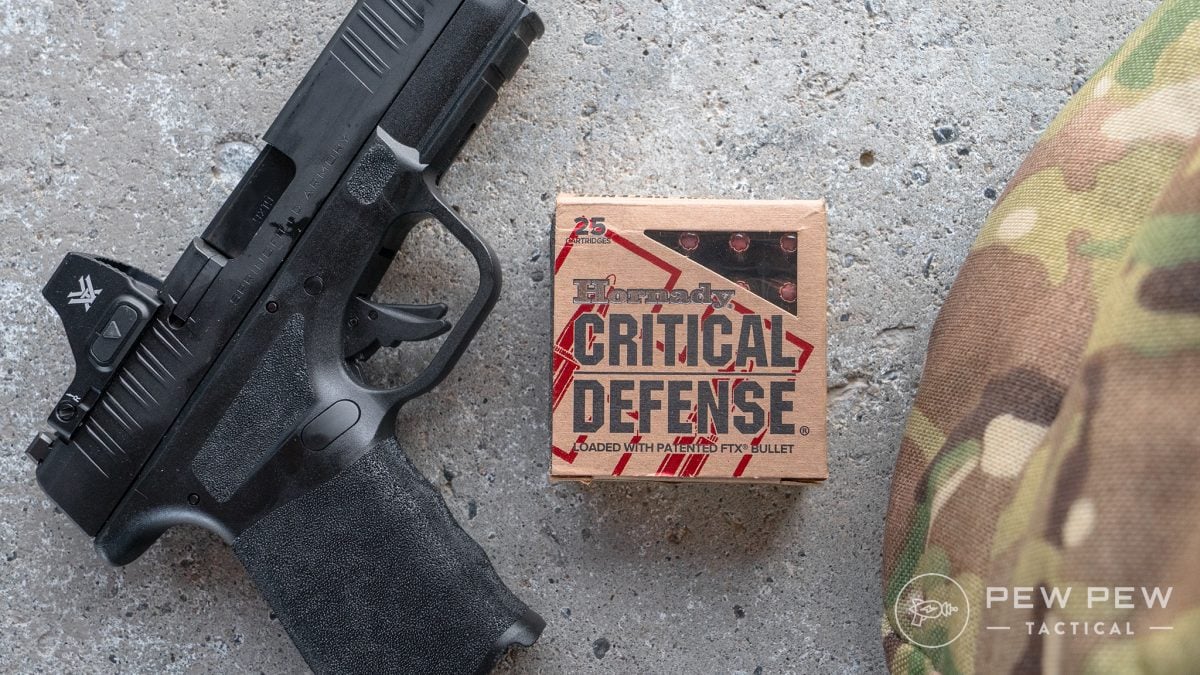
Aside from practicing at the shooting range, you hopefully will never need to fire your guns. If you are ever faced with a deadly threat to yourself or others, however, Connecticut does allow for the use of deadly force in self-defense, but only in very specific situations.
Connecticut law is very clear about when the use of physical force is justified. Physical force is only justified when you reasonably believe another person will imminently use or is already using physical force against you or a third person. The use of deadly physical force is illegal unless you reasonably believe that the aggressor is:
- Using or about to use deadly force
- Inflicting or about to inflict great bodily harm
All physical force must be reasonably proportional to the threat against you. You cannot use a gun to defend against a fist.
Castle Doctrine
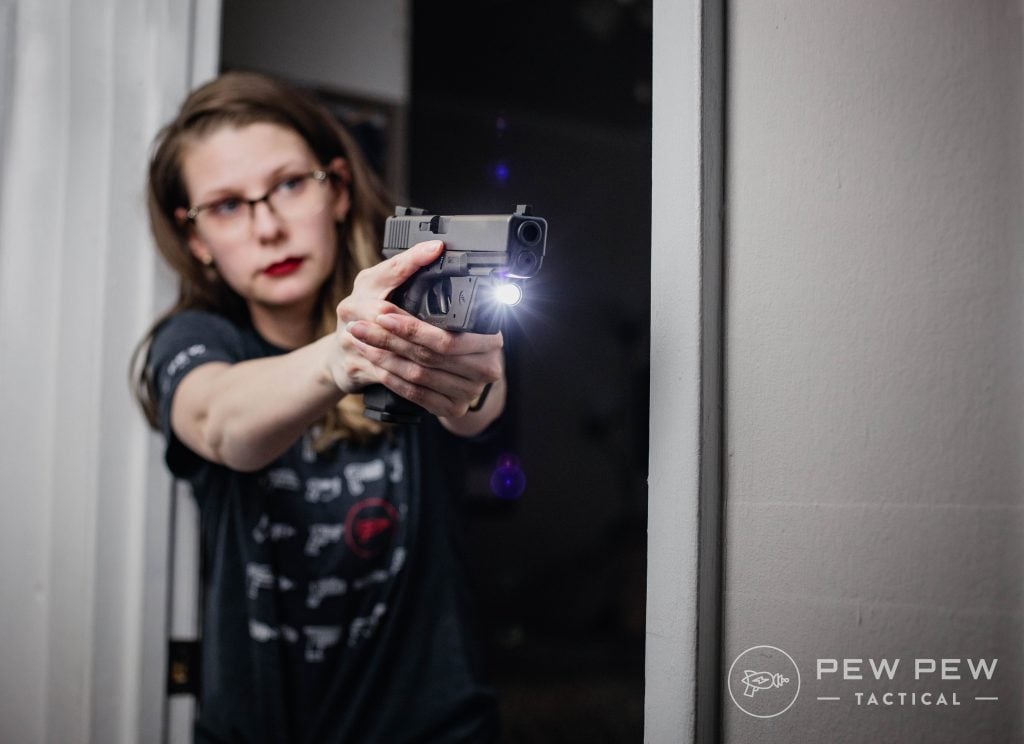
Under what is commonly known as the “Castle Doctrine”, if you are in your home, you can use “reasonable force” to defend yourself and others if necessary.
Connecticut law specifically says there is no duty to retreat in your home or workplace as long as you were not the initial aggressor in a confrontation.
Specifically, if you reasonably believe that an intruder in your home is about to inflict great bodily injury or death on you or someone else in the house, you can use reasonable means to defend yourself.
Anything less than a deadly threat must be met with less-than-deadly force. In other words, your use of force must not exceed that of your attacker.
Standing Your Ground/Duty to Retreat
Connecticut does not have any Stand Your Ground laws. Instead, the state mandates a duty to retreat if you are outside your home or workplace.
This means if you are faced with a threat, you are not allowed to respond to the threat and must retreat instead, even if you have a CTPP.
You cannot claim self-defense of any kind if you:
- Knew you could avoid the use of deadly force “with complete safety” by:
- Retreating
- Surrendering your possession(s) (such as a wallet during a robbery)
- Complying with a demand to stop performing an act that you are not obligated to perform
- Were the initial aggressor in a confrontation, unless you:
- Withdrew from the situation
- Effectively communicated your intent to withdraw
- Provoked a fight with the intent to use physical force against another person
- Illegally agreed to the fight ahead of time (such as a duel or gang fight)
Especially with these laws on self-defense, you should always use your best judgment to decide what type of force is appropriate. Just because you are allowed to use deadly force doesn’t mean you have to.
Taking any life is always a serious decision and may not always be necessary in order to end a threat to you and your loved ones.
Final Thoughts
And on that happy note, we’re finally done! Hopefully, all these restrictions haven’t discouraged you from trying to buy a gun in Connecticut.
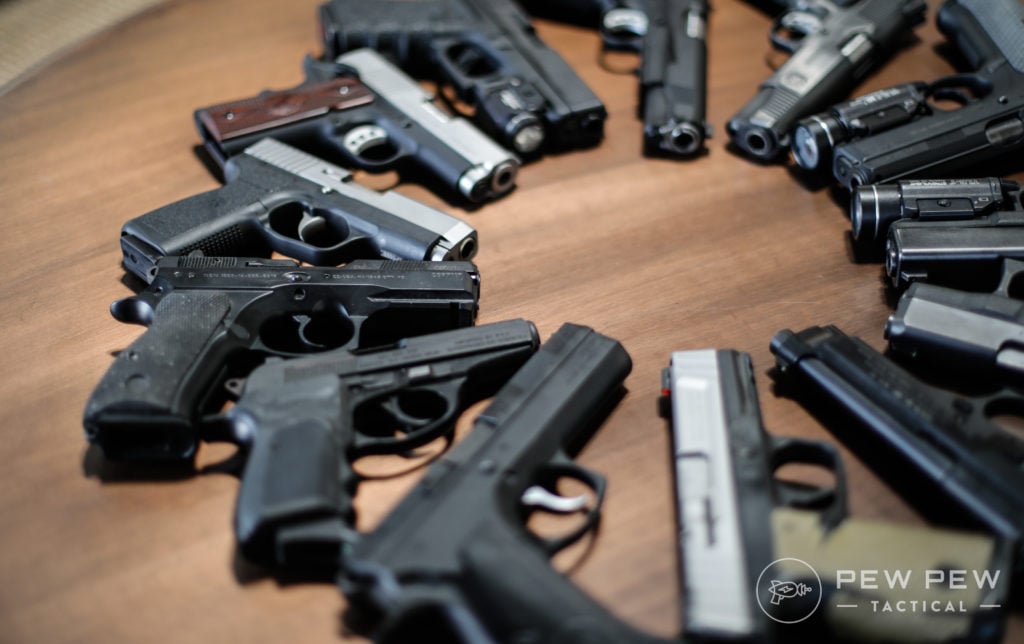
If you do spring for a gun, you’ll need a place to store all those guns. A sturdy safe can keep your guns from prying eyes and curious kids. If you want to start smaller, a gun cabinet, or even just a decent handgun safe may be a good investment. Getting proper training with your firearms is a good idea, too. Happy shooting!




